
CAFA ART INFO interviewed Professor Lyu Pinjing from the School of Architecture at CAFA to discuss topics such as the graduation guidance in the School of Architecture, the studio teaching, undergraduate and postgraduate graduation pieces this year, as well as his own state during the pandemic.
Interviewee | Lyu Pinjing (Professor of the School of Architecture, CAFA)
Interviewer | Yang Zhonghui /CAFA ART INFO
Interview time | May 17th, 2020
Images | Courtesy of Professor Lyu Pinjing
Translated by Emily and edited by Sue/CAFA ART INFO
CAFA ART INFO: Hello, Professor Lyu. Because of the pandemic, the graduation exhibition at CAFA has changed a lot this year. We have paid attention to the topics related to the graduation creations by students. Can you introduce the guidance of the graduation creation in the School of Architecture to us?
Lyu Pinjing: Graduation creation is a significant stage to realize and cultivate talent at the undergraduate level during the design of the graduation teaching. It is also an important practice stage during the cultivating plan. The graduation creation cultivates students to use basic theories, knowledge and skills comprehensively to analyze and deal with the practical problems in technique, art, economic and social levels, which can train students’ abilities in architectural design and innovative research. Meanwhile, the graduation creation is also the vital basis of a student’s graduation and degree qualification, the important reflection of the undergraduate level teaching quality as well as the significant section linking up teaching to society.
As the final step in the teaching plan of an architectural major, both National Advanced Undergraduate Teaching Evaluation Criteria and National Advanced Institution Architectural Major Teaching Evaluation Criteria have proposed many detailed requirements for the design of the graduation materials. The former focuses more on the normalization of teaching, while the latter features the outcome and quality of teaching. In order to retain and develop the quality of graduation design of an architectural major, tutors need to guide and inspire students from the perspectives of the selected theme, creative process and work evaluation, etc. By doing so, tutors are expected to mobilize students’ consciousness in independent innovation.
Under the overall strict control, the graduation design teaching in the School of Architecture encourages students from major directions and studios to develop diversified teaching strategies. We also expect both tutors and students to innovatively explore. The topic selection can be the rehearsal of the real cases or the discussion and practice of the design methodology of conceptual topics. For example, every year, some of the students choose digital means to complete their final pieces. The scope of selection in topics for the graduation design is not too detailed. It can be a single building design of a certain scale or an urban design within a certain area.
The freedom of topic selection comes from the macro grasp of the entire graduation guidance process. The supervisor team will comment on the value, meaning and teaching effectiveness of topics in the topic-set and mid-term meetings and give suggestions, to ensure that each topic can meet the graduation design teaching requirement. The broadness of the topic selection greatly enhances the possibility of the design that integrates with the social reality. Whether problems can be discovered and solved in a realistic environment has become a significant basis for judging the creation. In the process of solving practical problems, students have exercised their actual combative capabilities, laying a good foundation for a smooth transition to the professional stage.
Regarding the graduation creation, many students jokingly call it “the final madness”, which allows them to fully express themselves for the last time before leaving school. It has become a learning process often criticized by the teachers of architecture. I personally think that this attitude should be viewed dialectically: if “madness” is a form of a show without any thought and logic, it does not make any sense; but if it expresses positive thinking, the innovative attitude, it can be explained in an architectural language and logic, we should encourage it no matter how crazy it is. A scholar once said: “A good teacher is one who does not destroy students.” Tutors should have a tolerance, be good at discovering every small shining point in the students’ creative process, guide and encourage them in time, and protect students’ creative passion. As the most important and final section of education in universities, whether students can be sent further along the path of professional development, creative guidance towards graduation is crucial.
CAFA ART INFO: I understand that the School of Architecture recently conducted a student graduation presentation. Can you talk about the presentation for us?
Lyu Pinjing: In the section on graduation presentation which includes a team of external judges, there will be a comprehensive evaluation of each creative achievement. In recent years, the School of Architecture has launched a new initiative to appraise undergraduate graduation creations, inviting famous architects in the industry to openly comment on outstanding works selected by various studios. This year, due to the pandemic, this part has been carried out online. Everyone can enter the online meeting room to listen, so it is more transparent. It does not only hope to give students a fair assessment, but I think its value lies in the fact that for students, whether it is praise or reprimand, they can hear different voices from the outside world before stepping into society. By doing so, they improve their critical thinking. It is also a good opportunity for tutors to review and reflect on their own teaching through the comments of external experts.

Online Final Presentation of Studio Four
CAFA ART INFO: CAFA adopts the studio teaching method. Can you talk about the teaching focus and main teaching ideas of your studio and what impact has been affected by the pandemic?
Lyu Pinjing: In the past few years, Studio Four of the School of Architecture where I work has established a strategic partnership with the AMO team led by the well-known Dutch architect Koolhaas to jointly facilitate the promotion and exchange of the theory of cultural village construction in the world. From 2017 to 2020, the Studio Four team and the AMO team focused on discussing urgent environmental, political, and socio-economic changes in non-urban areas. The countryside here breaks the traditional concept of human settlements and extends to areas of natural wilderness, large-scale infrastructure, energy, logistics systems and other elements outside the city. These areas occupy 98% of the earth’s surface area. Today, the “countryside” is not only a Utopian experiment site but also contains ideas about the construction of future lifestyles. Through the research on the countryside in the past few years, we can clearly see that areas neglected in the rapid urbanization process of the past few decades are now becoming the frontiers of change. This makes us full of speculation and imagination about the future. The uncertainty about the future is precisely an intangible motivation that our studio hopes to convey to students and makes it the driving force for young students to innovate and challenge tradition.
In the preparation stage of the graduation creation, the AMO team and our team jointly guided students to conduct research on ordinary villages and tried to find a new way of rebuilding the village in the context of relocation and poverty alleviation in rural areas. Both urban and rural elements are implanted in the new model to make the new village self-sufficient and sustainable. In the research process, first of all, by referring to the national statistical data, we set up a data model to analyze the current average village, which can reflect the basic functional capacity necessary for the village to be relocated in the future. Then, e-commerce infrastructure, new agricultural systems, medical care, education, tourism and other modules would be introduced for future rural functions. Finally, an abstract and variable building function module will be popularized and used in the construction of a wider range of relocation villages. This research has profound enlightenment for the students in terms of concept expansion and research method training and laid a certain ideological foundation for their final pieces.
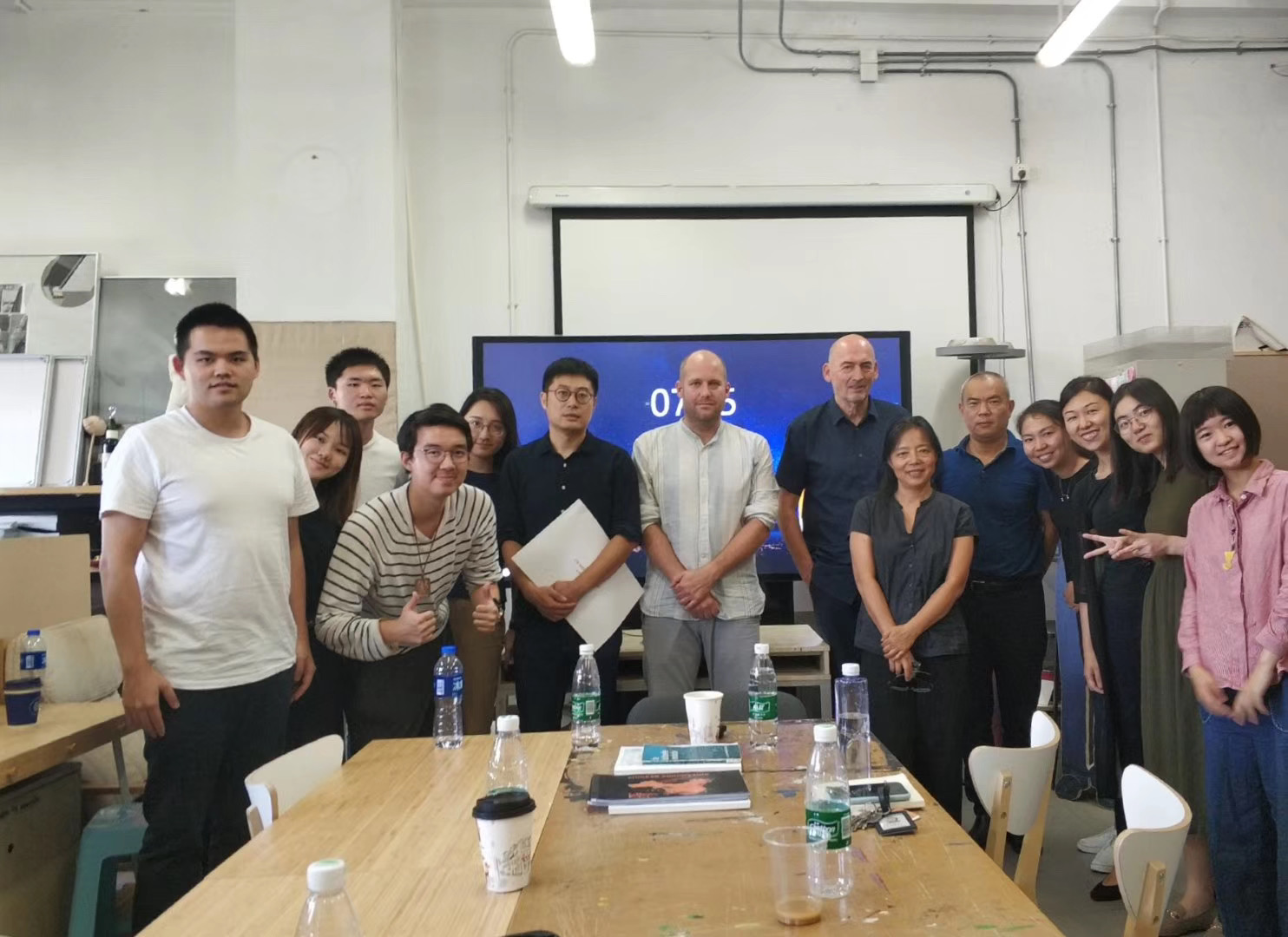
Koolhaas and the AMO team visited the Studio Four
The undergraduate graduation project is a design for the Tianshan Tianchi Visitor Center in Xinjiang. This topic is also derived from a research project of the Ministry of Culture and Tourism of the “Integrating Cultural and Creative Features with Scenic Spots.” Our studio was invited to participate in this project, hoping to use the image design of the visitor center as a breakthrough idea. A series of cultural and creative projects were designed to intervene in the cultural construction of the scenic area, thus improving the image quality of the entire scenic area. Years of rural research and practice have made the teachers in our studio realize that how to coordinate the relationship between man and nature as well as handle the relationship between human activities and the natural environment are particularly important today when emphasizing sustainable ecological development. Within this process, it needs to be guided through curriculum design and daily teaching if we expect to largely embody humanistic care and artistic ideals.
In order to organize the graduation creation teaching and formulate a reasonable teaching plan, the co-instructors Li Lin and Shi Yang in our studio and me used the time at the weekend before the winter vacation to visit the site to conduct research, collect basic information and communicate with the local government and the scenic area management committee to understand the current situation and development vision of the scenic spot. When it comes to the greatest impact on the graduation teaching due to the pandemic, it should be the cancellation of the original plan to organize students for the field of investigation. The understanding of the site can only be carried out through the drawings and other materials collected in the early stages and the information mining on the Internet. The lack of on-site perception and experience makes it extremely difficult for students to accurately grasp the attributes of the site and the atmosphere of the environment.


Students used materials that they could find at home to practice their graduation design.
CAFA ART INFO: Please introduce the overall situation of graduates supervised by you this year.
Lyu Pinjing: During recent years, Studio Four has projected the vision of teaching and research to the vast rural areas, taking “cultural village construction” as the research direction, and cutting into China’s rural construction and research from a humanistic perspective. In the past few years, discussions have been conducted on topics and phenomena such as typical villages, ordinary villages and self-sufficient villages. In terms of teaching and research methods, we emphasize document collation and field investigation. The students’ research focuses on rural construction and related topics and the research objects are diverse, forming a continuous open system. Some of the research results were sorted and designed and participated in through the “Countryside, The Future” exhibition that opened at the Guggenheim Museum in New York in February this year and was curated by the famous architect Rem Koolhaas.


Students' achivements in Guggenheim Museum in New York since Feb, 2020
Due to the pandemic, we were not able to attend the opening ceremony.
This year, our studio has two doctoral students, three MA students and seven BA students. They all completed their thesis and graduation works and passed the final presentation under the teaching structure of our studio system. We adopted various teaching strategies in response to the different levels of the students.
I. Using theoretical tools to analyze internal laws
Doctoral research requires a broad academic vision, deep theoretical foundation and ability in generalization which allows students to sort out problems from complicated phenomena, and put forward their own innovative views through systematic and mechanism research. The perspective of doctoral research includes the analysis of actual cases based on the integration and application of cutting-edge theories, revealing its universal significance. It also includes research from the perspective of in-depth field investigation and using theoretical tools to summarize and form contributions to the knowledge pedigree. This year, the two doctoral students have launched their own academic research from these two perspectives and achieved good results.
II. Combining theory with reality and responding to social needs
The types of rural architecture researched by the studio students and their perspectives are also diverse. This year’s three master students started their research from the stage, residential and school building types and extended this from a single building to the entire village. Students chose the topic from a certain perspective of rural construction, reflecting the impact of life, entertainment and education on rural revitalization and development. Based on the actual investigation and theoretical reference, a specific village transformation case and upgrading strategy was proposed.

Student Liu Jiahao's Stage Design

"Architecture Acupuncture" by Student Ye Zi

The Design "ReformingThe Idle Primary School" by Student Ju Cong
The design firstly established a system to coordinate the unused vacant land around and inside the rural idle school and then set a module based on the village layout, taking the twenty-four solar terms in the traditional culture as the theme. By doing so, the design intends to supplement the missing functions of villages and towns, thus improve the quality of rural services facilities, it imagines another mode of utilization of idle rural schools.
In the design of the renovation of the idle school, the villagers’ memories of the original school are preserved, the different new functions in the development of the village are embedded into the idle school and the original classroom space is re-divided.
III. Integrating professional knowledge and improving design capabilities
As for the graduation creation of BA students, it aims to integrate students’ five-year study outcomes and improve their design capabilities. I worked with the studio’s tutors to formulate a teaching plan, and put forward specific requirements to combine design with nature and coordinate the relationship between man and the environment. The Tianshan Tianchi Visitor Center in Xinjiang was selected as the design object and students were asked to focus on the environmental conditions, historical and cultural connotations of the site. Starting from the promotion of the tourist image of the Tianchi Scenic Area, the project intends to comprehensively solve the contradictions between terrain and construction, climate and structure, function and image, history and development and enhances the design level. On the basis of self-sufficient rural research and design, the students put forward seven different design ideas for the construction environment of the forest and wilderness.

Student Zhang Ziqi's Design Plan
 Student Zhuo Zishun's Design Plan
Student Zhuo Zishun's Design Plan
 Student Zhang Huoying's Design Plan
Student Zhang Huoying's Design Plan
 Student Tong Zixiao's Design Plan
Student Tong Zixiao's Design Plan
 Student Li Qianyan's Design Plan
Student Li Qianyan's Design Plan

Student Na Mila's Design Plan
 Student Li Dijin's Design Plan
Student Li Dijin's Design Plan
CAFA ART INFO: It is the first time that CAFA launched a “virtual art museum” for graduates. How did it impact on the content and display form of graduation work in the School of Architecture?
Lyu Pinjing: The virtual art museum and online exhibition hall can allow more people to visit the exhibition without physically being on site. This is very good for the dissemination of artworks. The audience is wider and the influence is greater. It is an ideal make-up for a physical exhibition under the pandemic. But it also posed new challenges and new possibilities for students to express their artistic and design ideas in a virtual space.
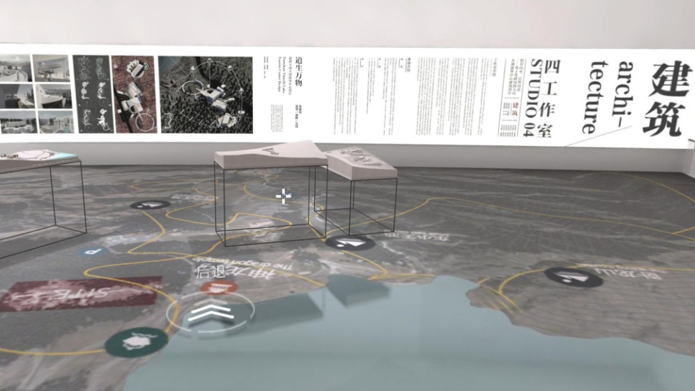
Virtual Exhibition Hall of Studio Four, 2020 CAFA ONLINE DEGREE SHOW
When paintings, sculptures and other fine art pieces are exhibited in the gallery, their creation process as an artwork has been almost completed. They are presented in their final forms. For architectural design, drawings, models, images and other display forms, strictly speaking, it is only as a process of artistic creation. Appreciation and reading of it not only remains in the aesthetics of form but also embodied in the logic and wisdom of the creator’s problem-solving methods. Whether online or offline, the display of architectural art always requires research and continuous practice.
CAFA ART INFO: Influenced by the pandemic and online exhibition, how was graduates’ mentality during their creation?
Lyu Pinjing: Frankly speaking, students are generally more adaptable to changes in their situation than teachers. They are more exposed to the network environment and have more software knowledge and application skills than teachers. Teachers can only rely on their rich experience to guide students in concepts and carefully control the process.
Since the students are all doing graduation creations at home, compared with the previous collective creation environment in the studio, graduates this year lack an atmosphere of communication and mutual encouragement. Also, there is a lack of opportunities to obtain comfort from peers in a disadvantageous situation. In the process of online communication, we often feel the anxiety of some students. In response to this situation, our tutors would communicate and analyze privately so that we could implement targeted guidance strategies in the next online tutoring process. Teachers would make the effort to discover the shining points of each student, encourage students to lay down their burdens, open up their thinking, and help students to clarify the direction and smoothly promote each creation. We also invited previous graduates and current postgraduate students to participate in a seminar on the process of graduation creation. The master and doctoral students could share their experiences and help students ease their emotions.
In the later stage of the degree show, we organized the online meeting every other day. Fortunately, the convenience of remote communication broke the isolation of physical space and the time limit of daily life. As long as needed, teachers and students can communicate online at any time. In fact, in the entire process of the graduation project, as an instructor, sometimes I feel very anxious. Every single detail within the process causes teachers to worry. Especially as the deadline for submission of results is approaching, and there are still students who have not completed. The anxiety for us is beyond words. Only when the students inform the completed information in the WeChat group can we eventually experience relief.

Online Assessment
CAFA ART INFO: How do you see the new form of graduation show, namely, the online exhibition in the virtual art museum this year? Also, how do you see the development of this new form in the future?
Lyu Pinjing: Virtual art museums cannot completely replace the functions of physical art museums. In terms of a better perception of artistic creation, physical art museums still have an irreplaceable role to play. In the future, the two should be better combined to give full play to their respective display and promotional advantages.
CAFA ART INFO: We have talked a lot about students above. Please tell us about your own state in terms of life and creation, etc.
Lyu Pinjing: During the pandemic, all teaching, research and social activities are conducted online. I sometimes go to school for meetings. For nearly half a year, the scope of my activities has hardly exceeded the Wangjing area.
At the end of last year, the CAFA team successfully bid for Xiong’an Urban Facilities Design Competition and organized teachers, students and staff from the School of Urban Design, the School of Architecture, and the Collaborative Innovation Office and other departments to participate in this important project. It was affected by the pandemic as we had to arrange a lot of work via the Internet. We organized frequent online meetings to discuss and explore implementation methods. Facing 12 participating units and more than 400 professional teams both domestic and from abroad, from the registration stage to the final review and after-discussion, the whole team has overcome numerous challenges and made a great effort to complete the task of organizing. As the person in charge of this work, I have particularly felt that although the pandemic has had a great impact on the work, the teachers and students of the CAFA team have demonstrated the spirit of defying difficulties and taking responsibility in their work. The fine tradition of CAFA that emphasizes art as serving society has made the best interpretation.
I am currently working on a project of renovation and reconstruction of traditional villages. If there were no pandemic, a large number of social research and fieldwork would be conducted. However, these tasks can only be used to sort out materials and research ideas now. Being at home almost every day, it prompted me to think about how to make use of the existing conditions and explore the renovation and utilization of residential buildings. In the past few years in the process of poverty alleviation and relocation in southwestern Guizhou, I found that because farmers went upstairs into their farm buildings to live in clusters, their lifestyles were forced to change. The living customs that were originally dependent on the land disappeared due to the new environment. Although the government has put every effort into using traditional techniques to increase employment and income, the benefits are still limited. Moreover, every household’s private land is gone. This did not only increase the daily cost of these urbanized villagers but it also meant their lives lack some rich and familiar content. If these needs can be fully considered in the planning and construction of new residential buildings and the efforts of architectural design can be combined with other industrial settings, community construction and cultural construction in the process of poverty alleviation, then a resettlement and transformation to urban residents is possible . I believe that better results will be achieved in resettlement.
I bought tools and materials from the online shops and conceived an idea of how to use the idea of a roof terrace to develop “private land” by myself, hoping to be able to contact nature without leaving home and obtain spiritual and material compensation from an interaction with nature. My idea is to build a rooftop ecosystem through experiments. First, the construction system must be simple and easy to implement and residents can complete it according to their wishes without external support; the second is to make full use of natural resources and adopt low-tech methods to integrate rainwater collection and solar energy utilization into the system configuration; third, it must cooperate with the implementation of the garbage classification system, to digest most of the kitchen waste and daily garbage in the ecosystem on the roof; fourth, it should create a suitable environment for plant growth and scientific planting, thus to improve plant growth and output efficiency. By doing so, more agricultural scientific and technological knowledge support can be implanted. If such a system can be popularized, it will be able to add more adaptive measures to the construction of resettlement and help villagers better adapt to urbanized living conditions. The experiment is still in progress, and the data and system structure formed by the experiment will become an important content of my residential renovation research.

My“Private Land”Practice
Architecture is actually the art of life. The so-called humanistic care is manifested only when the design can meet the needs of the residents in all aspects. These are all within the reach of the architect, but require in-depth observation, careful thinking, bold implementation and it must have empathy with the users.
CAFA ART INFO: Do you still remember your graduation show? Tell us something about your personal feelings.
Lyu Pinjing: I graduated from the Department of Architecture (now Collage of Architecture & Urban Design) of Tongji University in 1987. As I obtained the qualification to study for a master’s degree without exams before my BA graduation, I could spend all my time on the graduation design. Of course, at that time, I didn’t have trouble in finding a job unlike students nowadays. All graduates were allocated work by the state.

The Design Model of My Graduation Design
My graduation project was the design of the liberal arts building of Sichuan University. It was an actual design project by Tongji University commissioned by Sichuan University. Our supervisors included a professor and a young teacher. The students in the project group included five students from two classes. Before the graduation project started, the teachers took us to conduct a graduation design survey, from Shanghai to Xi’an, then to Chengdu, Emei, Leshan, Chongqing, Dazu, Wuhan, and finally back to Shanghai. During the investigation, we saw many cultural and educational buildings such as museums, teaching buildings, and historical relics such as tombs and stone carvings, which largely broadened our horizon. Along the way, we slept in the luggage rack of the train, the large cabin on the bottom of the Three Gorges passenger ship, etc. None of us found it difficult as we were excited by the inspection process and the joy of acquiring new knowledge.
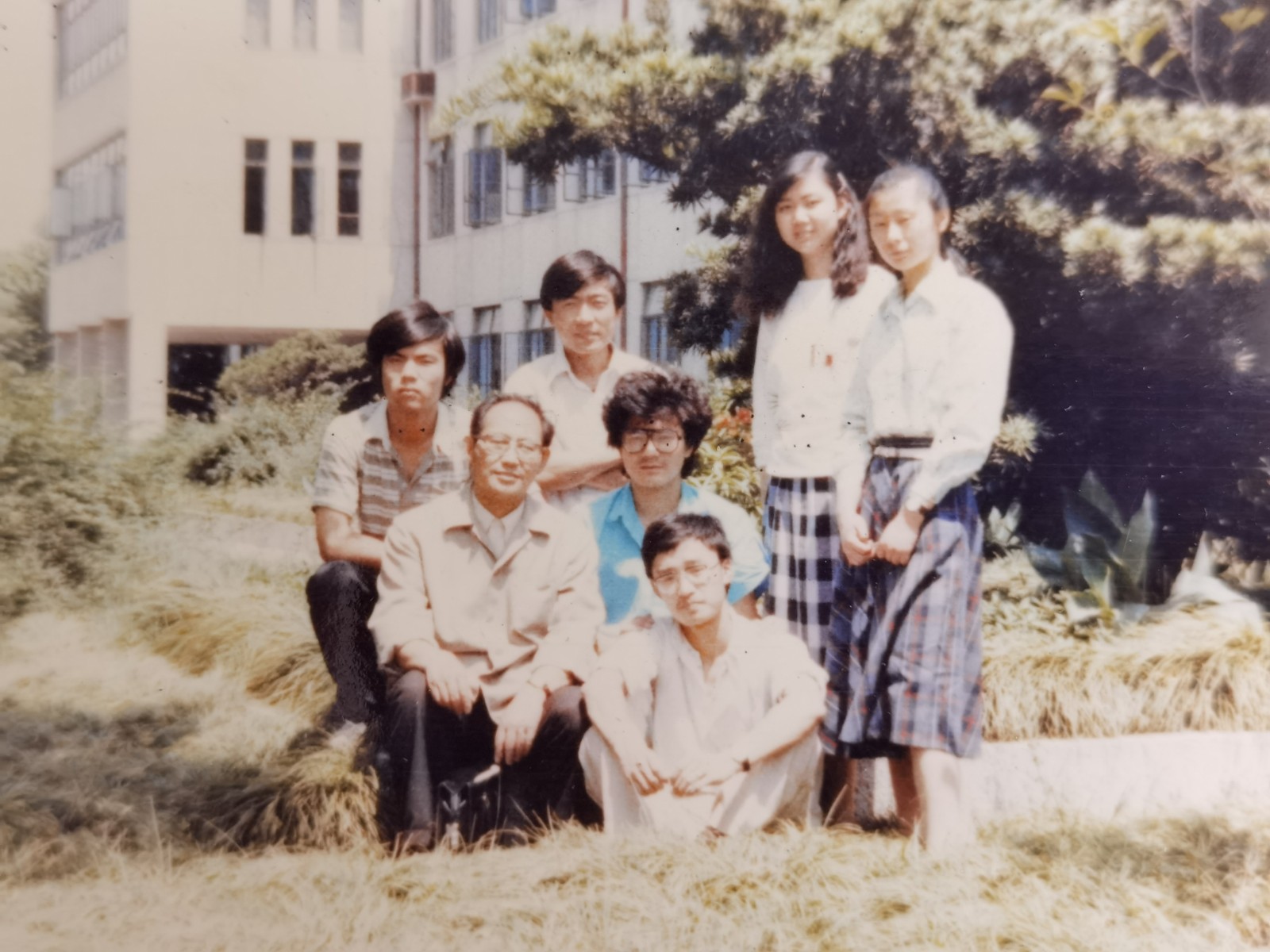
Group Photo with My Supervisors, 1987
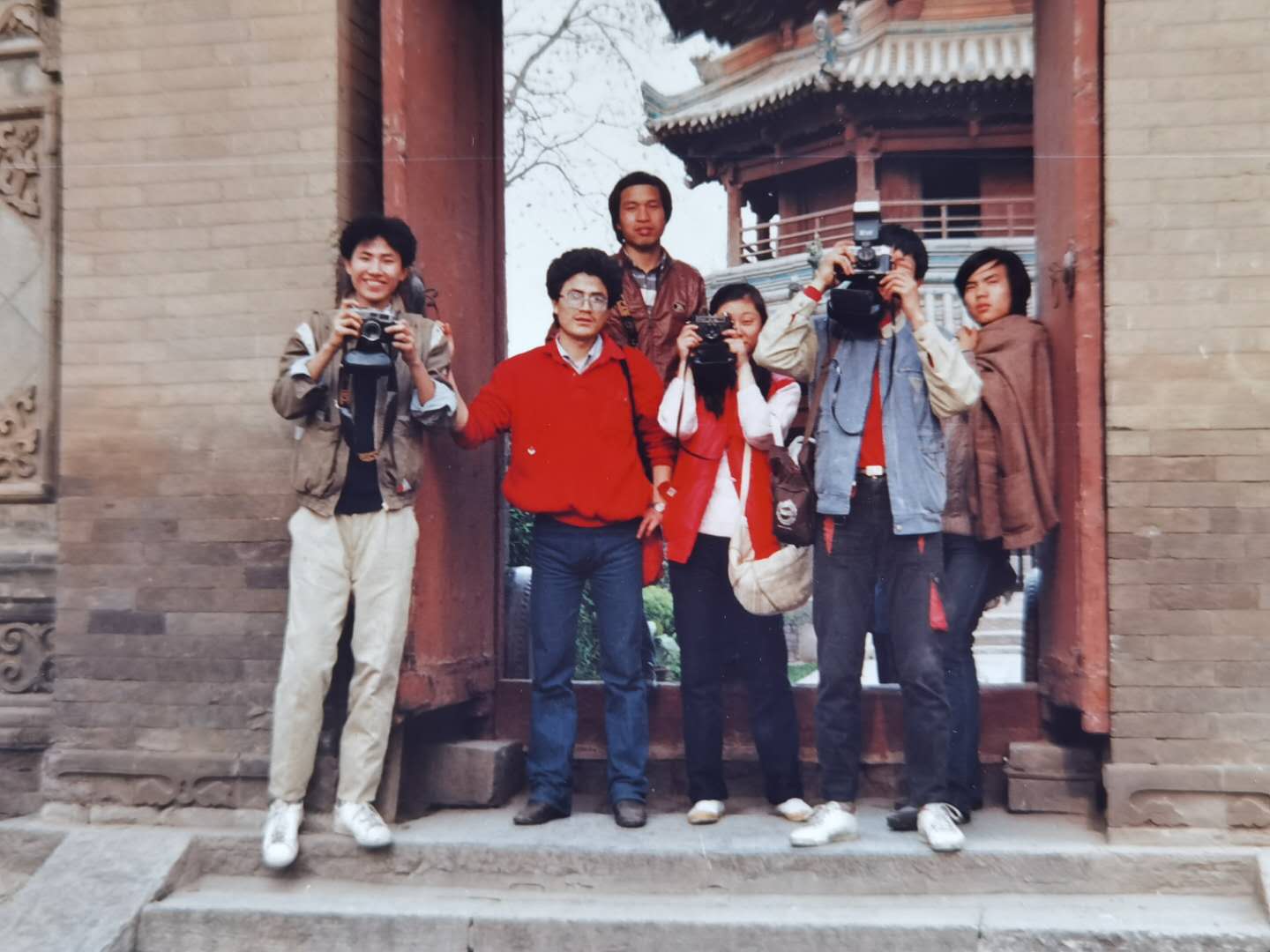
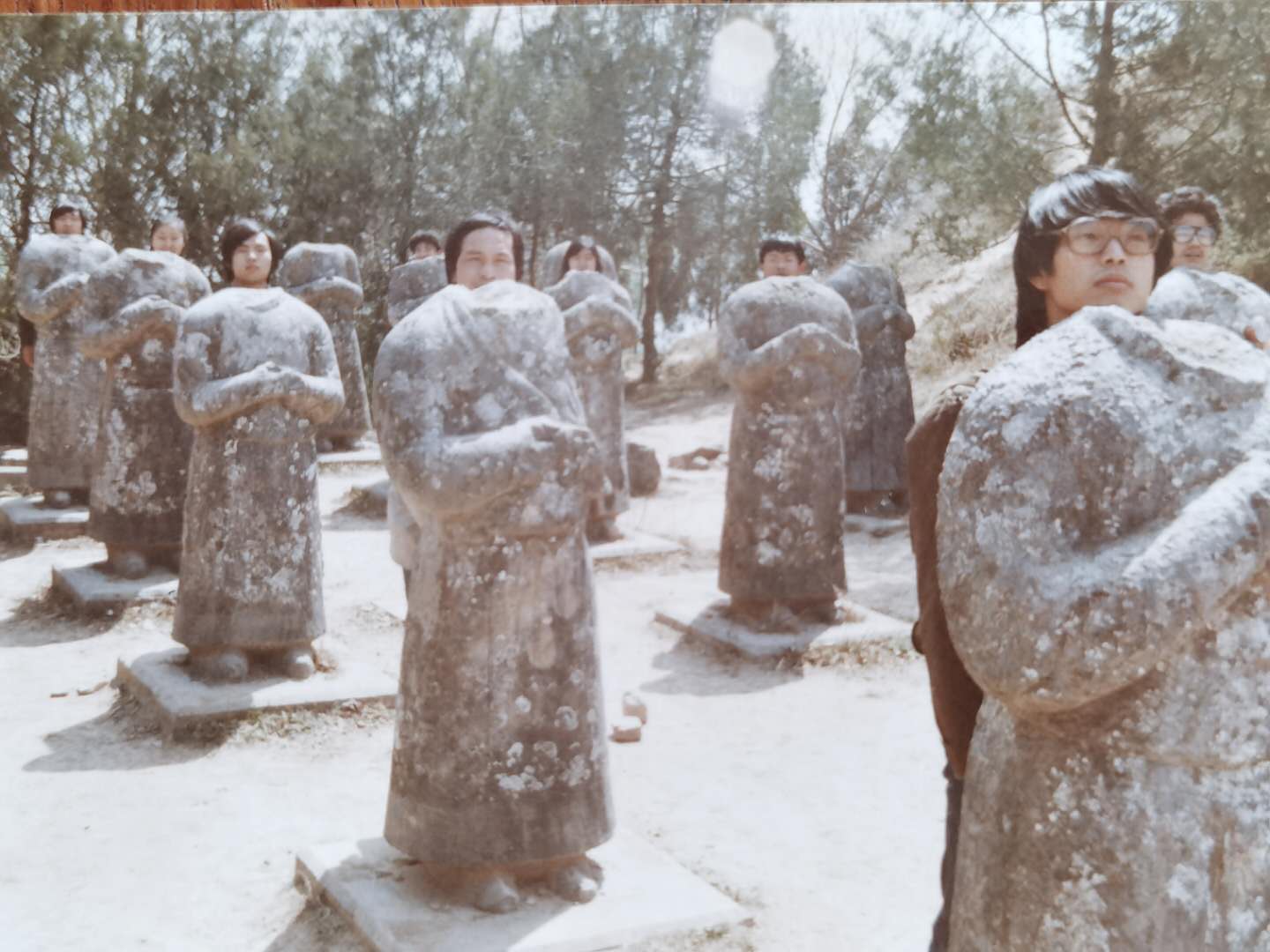
Graduation Project Investigation, 1987
Sichuan University has a beautiful environment, shaded by green trees, and with many historical buildings. How to build a high-rise teaching building while still coordinating with the original environment was the main problem to be solved in the design. We lived on the campus for a period of time to experience and feel the campus environment in depth, and to find the entry point of design from the context of the campus. In my design plan, in addition to finding the relationship between the form and the original campus space structure and determining the plane layout and spatial shape, I also have done in-depth research on the architectural color. I strove to not only imitate the original form, but also make innovation to achieve harmony. During the graduation design defense, my design was praised by the reviewing teachers and I was able to stay in school to teach. Unfortunately, at that time, there was no camera to record materials.
We did not have a degree show at that time. On the one hand, the condition was not as good as nowadays. On the other hand, we lacked the awareness in taking the graduation creation as an art show. In fact, so far, not many Architecture Departments have had a graduation exhibition. In this regard, when CAFA resumed architectural education, it learned from the successful experience of other art disciplines, explored the value of various exhibitions including graduation design exhibitions in architectural education and took exhibitions as an important part of architectural education. We see the role of an exhibition is to highlight ideas, express ideas, promote an exchange and enhance capabilities, which has formed an important connotation of the architectural education characteristics of CAFA and has had a positive impact on other architectural schools.
CAFA ART INFO: Finally, please send wishes to all graduates this year.
Lyu Pinjing: Always be critical to not only others but also yourself.
 Exploded Vew Animation of Test Base of China Academy of China Medical Sciences (Dexing)
Exploded Vew Animation of Test Base of China Academy of China Medical Sciences (Dexing)
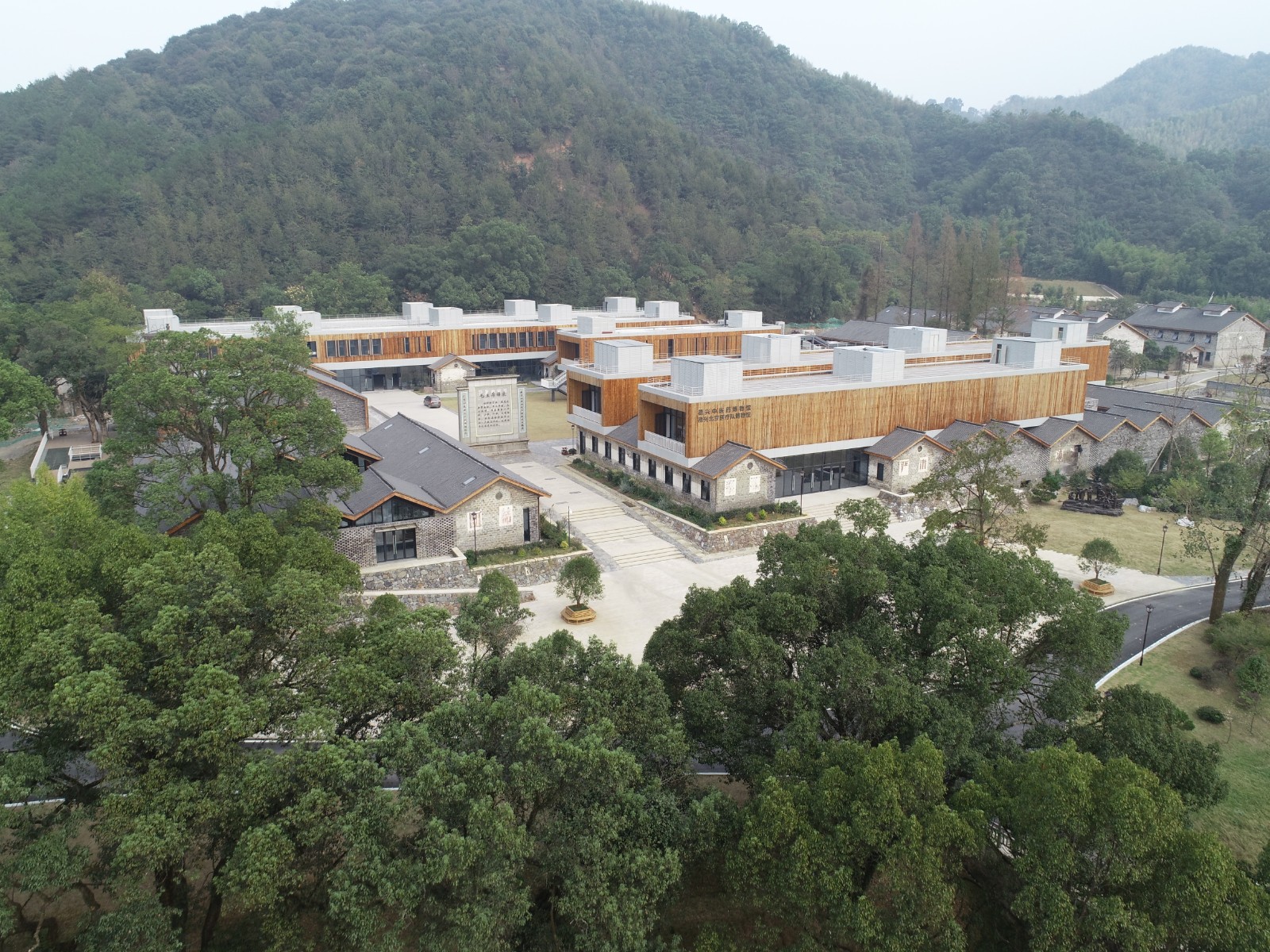
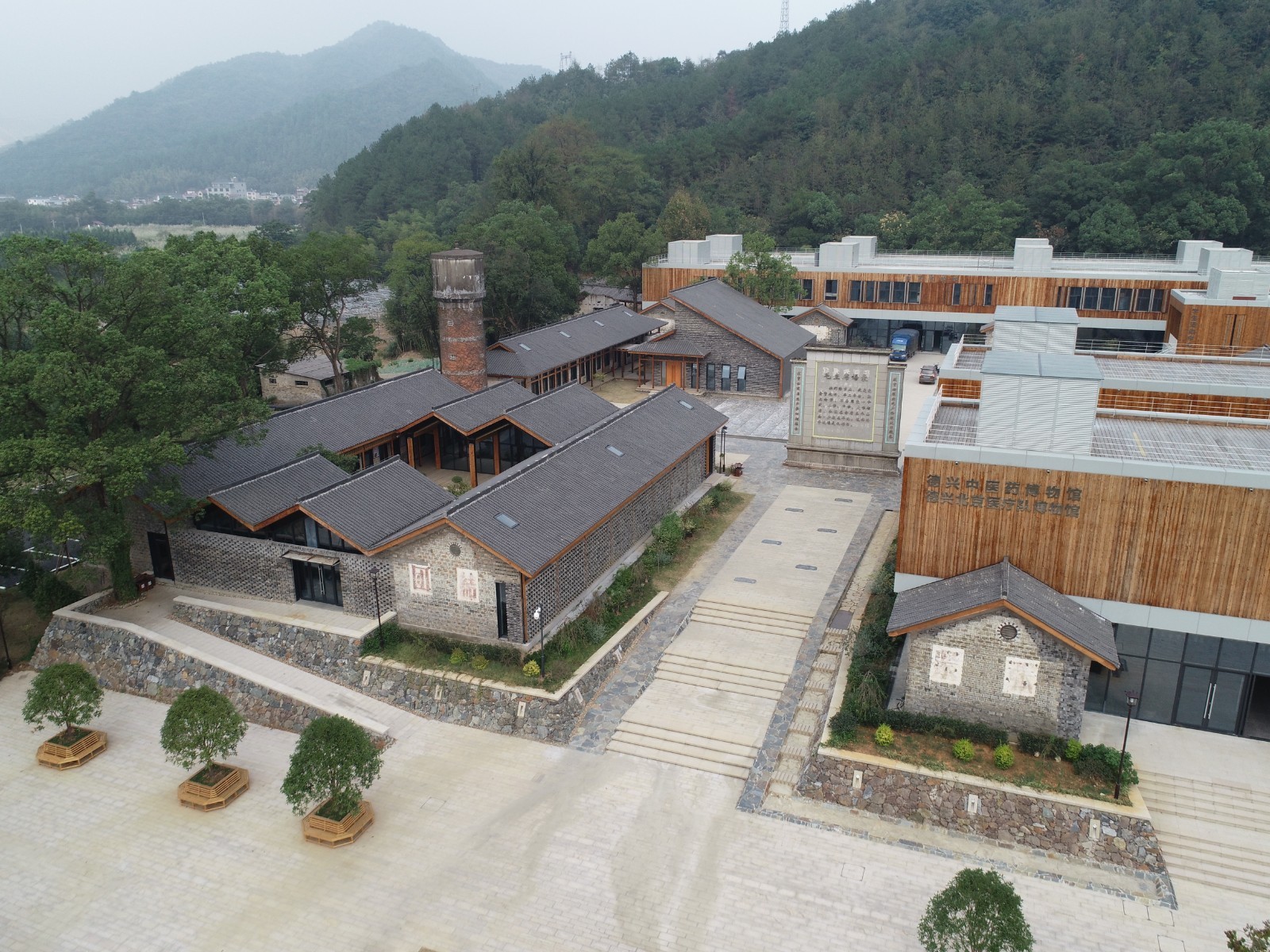

View of Test Base of China Academy of China Medical Sciences (Dexing)
About Architect Lyu Pinjing

Lyu Pinjing, Professor and National First-Class Registered Architect.
The standing committee of CAFA Party Committee, Vice President of CAFA, Responsible Supervisor of Studio Four of the School of Architecture at CAFA.
He is also the Director of Architectural Art Committee of China Artists Association, Member of Education Guidance Sub-committee of Architecture Major in Advanced Education of Ministry of Education, Member of the Architectural Education Assessment Committee of Institution of Advanced Education.




























